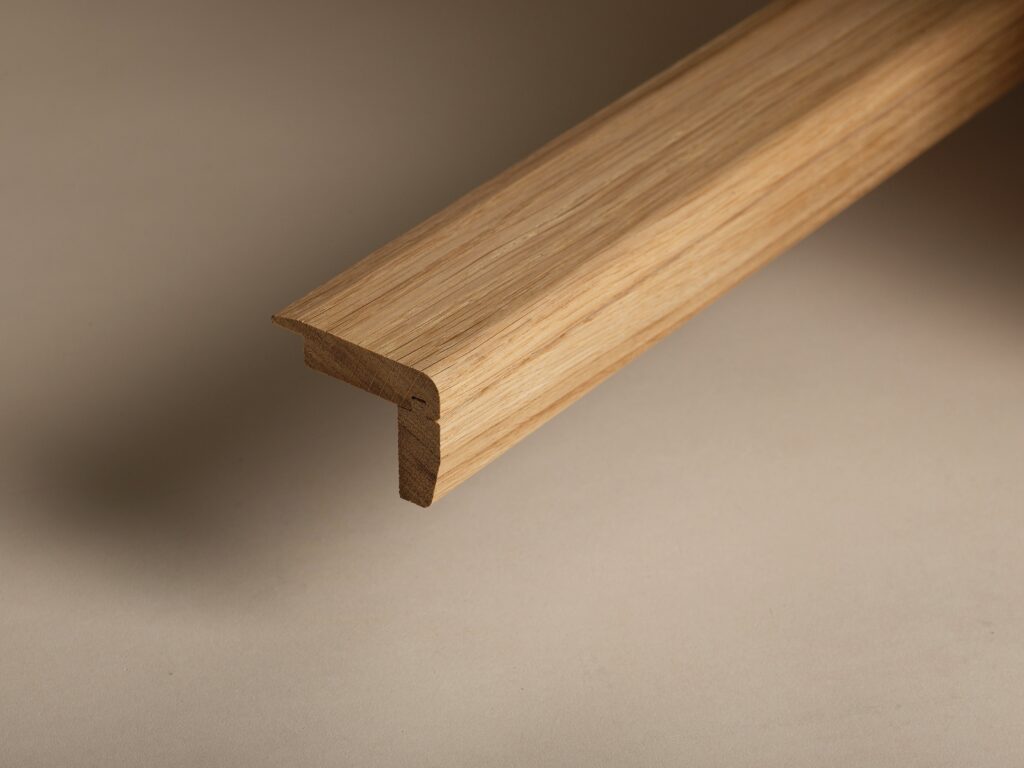
What is Wooden Stair Nosing?
Wooden stair nosing is an important but often underappreciated feature of stair design and construction. In public institutions, commercial buildings, and residential homes, Stair Nosing is very important in providing safety, comfort, and beauty.
Wood stair nosing refers to the extending edge or trim that is attached to the leading edge of each stair tread. Wooden stair nosing is typically composed of solid wood or engineered wood and can be installed at the time of original staircase construction or fitted retrospectively during the process of refurbishment.
Major Roles Played by Wooden Stair Nosing
Improved Safety
One of the primary roles played by stair nosing is improving safety. It aids in making each step’s edge more visible, making it easy for the user to measure the depth and width of steps. This is especially useful in the case of children, the aged, and those with poor eyesight.
Wooden nosing will also minimize the danger of slips and falls, as it will provide a small additional surface at the end of every step. Wooden nosing of some varieties is even textured or grooved to offer better grip.
Durability and Protection
Stair treads experience a heavy load with time, particularly at the front edge where traffic is the most intense. Wooden stair nosing provides a protective covering, maintaining the structural stability and appearance of the tread underneath. This may be critical in high-traffic applications like commercial property or multi-story homes.
Aesthetic Appeal
A finely completed wooden stair nosing adds a touch of elegance to the look of the staircase. It could add a smooth, flowing transition from risers to treads or a stylish contrast based on design. There are enough wood options, stains, and finishes available to have nosing match the current floor and décor or contrast with it.
Code Compliance
Nosing on stairs in the majority of nations must meet safety standards based on building codes and laws. Projection, slip resistance, and visibility are a few of the standard requirements stipulated by such standards. Installed wooden nosing that meets local regulations will prevent fines and will increase occupant safety.
Advantages of Wooden Stair Nosing
Natural Look
Wooden Stair Nosing lends spaces warmth and personality. Oak, walnut, maple, and bamboo are only a few of the many options you must pick from, with each having distinctive grain patterns and colors that add depth to your stairs.
Flexible Design Options
Wood nosing is available in different profiles, such as bullnose (rounded edge), square edge, and chamfered edge. This offers builders and architects ease of selection of a design that will suit traditional, modern, or minimalist houses.
Ease of Maintenance
Good-quality wooden nosing is simple to maintain. It is possible to refinish and sand it to eliminate scratches or marks, thus extending its lifespan and making it appear like new.
Eco-Friendly Choices
Most wooden nosing products are constructed using wood that is grown sustainably, a cleaner approach than man-made materials. Wood nosing can also be repaired instead of being replaced, limiting wastage in the long run.
Standard Wooden Stair Nosing Profiles
Bullnose Nosing: Has a curved front face and is the most conventional of them all. Not only pleasing to the eye, but safer as well because of its smooth edge.
Square Edge Nosing: Provides a newer, more modern appearance with sharp, defined edges. Perfect to use in modern interiors.
No Overhang Nosing: Designed to sit flat on the stair tread, used where minimalism is a key requirement.
Installation Considerations
The correct installation of wooden stair nosing is key to its success. It can be nailed, screwed, or glued into position, usually with extra adhesive to ensure a close fit.
When the stair nosing is installed over an existing staircase, particularly installed over carpeted or tile stairs, there are certain stair nosing profiles that will fit over the step snugly without cutting. Read This
When to Replace Wooden Stair Nosing
Over time, stair nosing will rot or become loose. Indications that it should be replaced are
- Visible cracks or chips on the wood
- Wobbling or swaying upon stepping over it
- Discoloration or heavy wear
- Squeaking or creaking when stepped over
Rebuilding damaged nosing in a timely manner contributes to safety and appearance.





